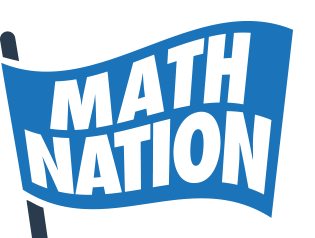Moving on from point-slope form: New ways to help students write equations to represent linear functions under the MAFS


The other Study Experts and I have fielded a lot of questions about point-slope form since Florida moved to the MAFS—most frequently, “where did it go?”. For those of you who haven’t noticed yet, it’s true: point-slope form is not required in the new standards, and your students won’t be asked about it on their Algebra 1 EOC assessments.
This news might shock those of you who are accustomed to teaching both slope-intercept and point-slope form. Relax! The change frees up some time for you to find new ways to challenge your students to problem solve with the skills they DO need to learn—like understanding the slope-intercept form and the parameters of a linear function, the slope, and the y-intercept. I know you might be thinking, “What are we supposed to do if students are given two points?”
This is a great opportunity to let your students drive their own learning by centering your lesson around them and things they find relevant. Here’s how:
Try giving students two points and asking them to figure out how to write the equation of the line. Having learned slope-intercept form, they know they need to find the slope and the y-intercept. They will probably find the slope easily and then experience a bit of struggle. This is a great time for them to put MP1 into practice (MP1: Make sense of problems and persevere in solving them).
You can have a couple of hints available to students when they are stuck.
One could be, Now that you have the slope, is there a way to use y=mx+b to find the y-intercept?
Another could be, The slope formula contains two points. Now that you have the slope, could you use that and one of the points to find the equation of the line?
When giving the two points, I strongly suggest starting with a real-world example that students find realistic and relatable. Here’s an example you can use:
You received and iTunes gift card for your birthday. Let x represent the number of songs purchased and y represent the remaining balance on the card. If the situation were graphed, the points (7, 66.25) and (23,46.35) would be on the graph of the line representing the situation. rite an equation to represent the situation.
Then, follow up with more questions to see if they can think critically about the situation.
What is the slope? What does it represent in this situation? What was is your y-intercept? What does it represent in this situation? What is the x-intercept? What does it represent in this situation? Is this function discrete or continuous? What is a feasible domain? What number system best describes the domain? Use the equation to determine the remaining balance if you purchase 33 songs.
Suddenly, in teaching this one concept, you have assessed multiple standards:
- Write an equation to represent the situation. MAFS.912.A-CED.1.2, MAFS.912.F-LE.1.2
- What is the slope? What does it represent in this situation? What was is your y-intercept? What does it represent in this situation? MAFS.912.F-LE.2.5, MAFS.912.F-IF.2.4,
- What is the x-intercept? What does it represent in this situation? MAFS.912.F-IF.2.4
- What is a feasible domain and what number system best describes the domain? MAFS.912.F-IF.2.5
- Use the equation to determine the remaining balance if you purchase 33 songs. MAFS.912.A-CED.1.1
Some students will easily find the equation using the methods outlined above; others might graph the points and trace back to find the y-intercept. That’s okay. Use this as a learning opportunity. You can show the students’ different approaches on a doc cam. Then, to raise the level of difficulty, ask the students to repeat the process, but give them two points that would be too hard to graph to find the equation of the line.
And, if you absolutely must sneak point-slope form in there for peace of mind, don’t just give them the form to them. Students can easily derive point-slope form by using the slope formula. Having them derive it themselves will be more meaningful than just having them memorize another form.
At Math Nation, our stance is that we need help students learn to persevere and problem solve. Many students will struggle to remember point-slope form. But, if they discover various ways to write the equation, they will come to own the knowledge and not easily forget it.


